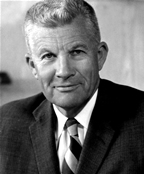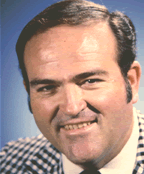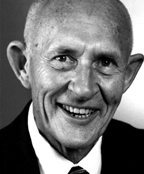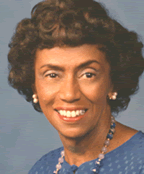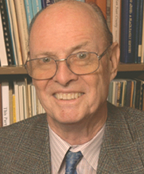The Leaders' Legacies
Longest-serving faculty member and historian tells the stories of CSUF chiefs
August 27, 2007
By Mimi Ko Cruz
Cal State Fullerton’s first president, William B. Langsdorf, never stressed out. At least not so anybody could see.
“Bill kept his feelings to himself, always reserved and calm,” said Lawrence B. de Graaf, the university’s longest-serving faculty member and historian. “So it surprised me to learn of his very passionate feelings about the elevators in the humanities building.”
“Each of these interviews explores the functions of the university, the positions taken by each president and the decisions that have shaped Cal State Fullerton. Together, they offer an extended portrait of an institution of higher education evolving in pursuit of its mission.” — Lawrence B. de Graaf
The new building was under construction in 1968, and when the company who won the contract for the elevator installation turned out to be the same firm that had previously installed the chronically out-of-service escalators in the science (now McCarthy Hall) building four years earlier, Langsdorf hit the roof, de Graaf said.
The president “had spent four years listening to the complaints about the science building escalators and he did not want the same problems in the new humanities building,” de Graaf said. “He told me, ‘Larry, I’ve never been so mad.’ He even wrote letters of protest to the governor.”
As it turned out, Langsdorf’s worries were warranted. Students and faculty, de Graaf among them, did a lot of stair climbing until the elevators were replaced a couple decades later.
That episode is one of the stories chronicled in de Graaf’s book about the first president. The book relies upon a university oral history project in which de Graaf conducted interviews with all of the university’s presidents, except Miles D. McCarthy who died in 1995, before the project was launched.
It was Langsdorf who had hired de Graff in 1959 to be one of the university’s
original faculty members, and subsequently named him the university historian,
with the explanation that “any good institution has to have a history
and I want you to compile the history of this institution.”
It’s a charge de Graaf has filled for more than four decades, tracking
campus milestones, taking notes, conducting hundreds of interviews and
documenting tidbits of juicy information for posterity.
“For a university celebrating its 50th anniversary to have a founding faculty member still present and active on campus is astounding,” said Thomas P. Klammer, dean of the College of Humanities and Social Sciences. “Larry de Graaf is a living treasure. An historian by training with decades of experience using oral history, he views the evolution of Cal State Fullerton from a unique perspective. The university’s history is his as well, and we look to him to tell us how we collectively became who we are.”
Indeed, said Beverly S. Cartwright, CSUF’s 50th Anniversary project manager. “The 50th Anniversary Planning Committee is so fortunate to have a founding faculty member as part of Cal State Fullerton’s golden anniversary celebration,” she said. “Larry’s first-hand experiences and depth of knowledge about the campus really benefit all who work with him.”
Under de Graaf, who helped establish the History Department and its curriculum and the first university archive, the committee is working on several projects: a history book about CSUF; a photo and video history on DVD; a digital catalog of all of the library’s historical resources; and exhibits, showcasing campus milestones.
Meanwhile, de Graaf’s biographies of Langsdorf and retired President Jewel Plummer Cobb are available at the library. His book on former President L. Donald Shields is being printed and President Milton A. Gordon’s biography is under review and soon headed for the printer. A limited quantity of each book will be available for purchase.
In the pages of the biographies, readers will find anecdotes that reveal something about the people behind the presidency. There’s a story told by a disappointed Shields, who had rallied community support in the 1970s to open a community theater adjacent to the Performing Arts Building, only to have the project put on hold. One of Cobb’s stories includes her struggle with faculty members opposing her plan to expand remedial education, de Graaf said.
His book on President Gordon will include stories about the university’s ground-breaking technology initiatives.
“Each of these interviews explores the functions of the university, the positions taken by each president and the decisions that have shaped Cal State Fullerton,” de Graaf said. “Together, they offer an extended portrait of an institution of higher education evolving in pursuit of its mission."

